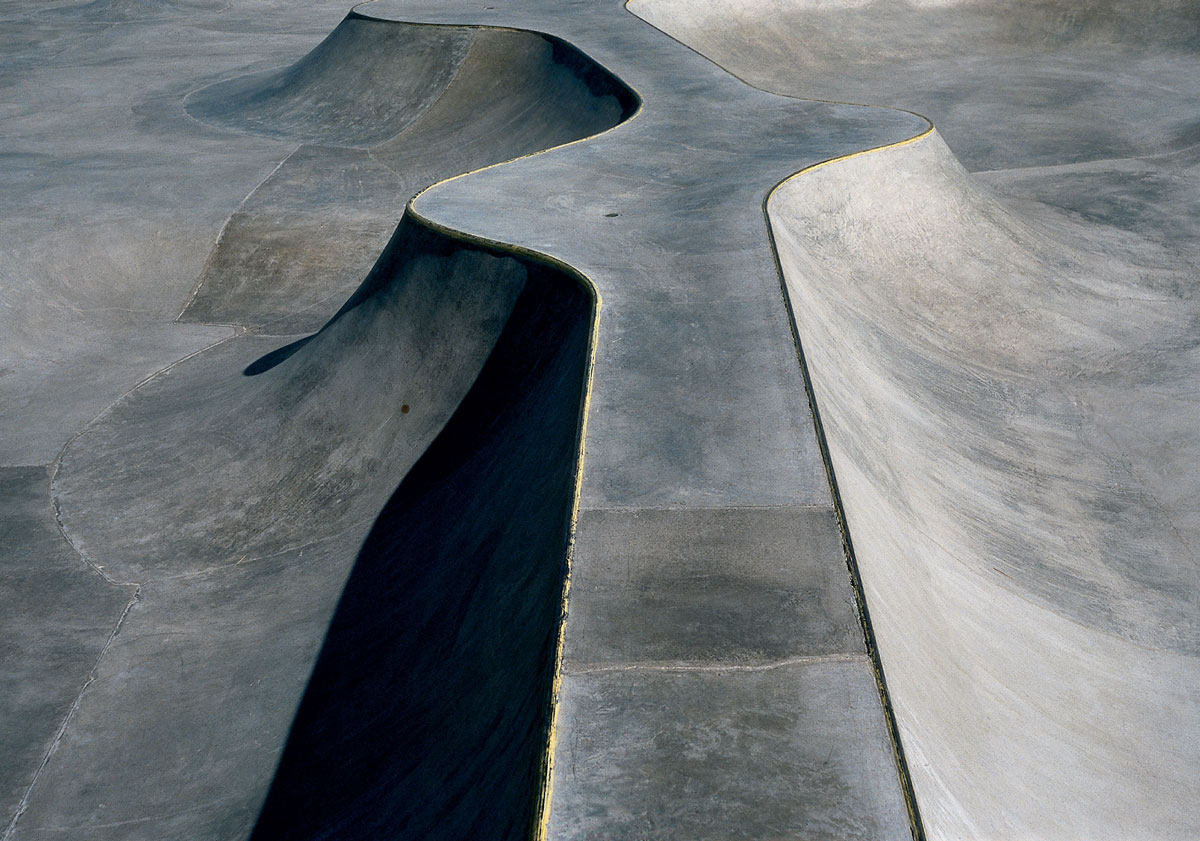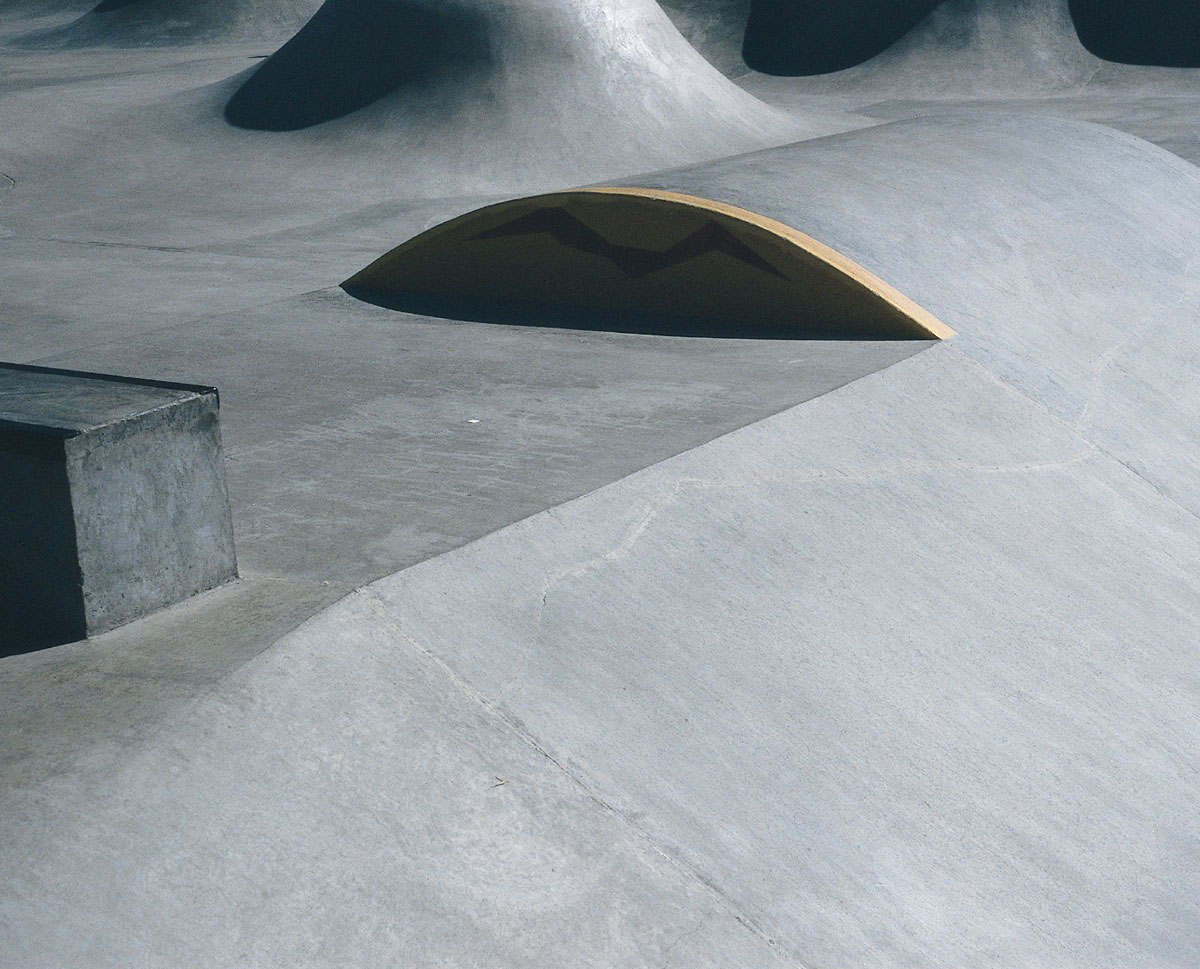Skateable Reverse Engineering
Radical contours
Jocko Weyland
Skateboardings evolutionary leap from flat ground to the vertical walls of Southern Californias empty swimming pools in the mid-70s was the starting point for an inspired re-appropriation of familiar sites. This was followed by a construction boom in commercial skateparks, almost all of which had gone bankrupt and been bulldozed by 1985. The subsequent dry period made skateboarders a breed of connoisseurs unique to the building arts: they possessed an instinct for evaluating every type of manmade object from the sole standpoint of whether or not it was skateable. For the last 25 years, a growing number of virtuoso manipulators of wood and cement have been using this criterion as a template for large-scale orchestrations of physical space that combine utter functionality with sensuality of form.

The epitome of renegade, untrained skatepark construction, where architecture and engineering come together, is Burnside in Portland, Oregon. Started in 1990, it lies under a bridge that used to be frequented by drug addicts and other undesirables. It was the perfect place for a dedicated group of self-taught designers to build without any meddling from city authorities. Over an eight-year period, Mark Scott, Mark Hubbard, and their colleagues led the effort to transform the desolate 50-by-80-yard plot into an unprecedented urban renewal project. They started with one banked wall and from there went forward, learning by trial and error, until they realized the current mind-boggling conglomeration of bowls, corners, and vertical walls. Burnside has enough quarter pipes, funboxes, curves, blob-like shapes, and radical contours to rival efforts by the avatars of the new architectural language that eschews ninety-degree angles.
Lacking an adequate place to skate, Scott and Hubbard started building out of necessity. While they illegally assembled Burnside, they also worked as masons or built residential swimming pools to learn how to pour slump and to mix sand and 3/8-inch pea rock to suit their special needs. What Hubbard calls “reverse engineering” means imagining the craziest skateable surfaces possible and then fabricating them. As Hubbard claims, “Anything with a curve, any shape that could be skated, especially rooftops … you look at it and then figure out how to make it happen.” The city of Portland belatedly gave them an award in the late 1990s for civic improvement, but the real proof of their success is defined by the pilgrims who travel from around the globe to enjoy the free-flowing, intricate environment.

Hubbard, Scott, and their company DreamlandSkateparks have built, in addition to Burnside, five free city-funded parks in Oregon and have recently completed projects in Washington state and Austria. The undulating cement moonscapes they have realized at Newburg, Lincoln City, and Aumsville in Oregon take the Burnside model to a level never reached in the commercial parks of the 1970s or the backyard halfpipes of the 1980s. Their new parks are organic and fluid, allowing skaters to roll unimpeded until they fall down or drop from exhaustion. When filled with skaters perambulating from side to side in an instantaneous choreography, they provide an arena for numerous riders rushing to and fro, zigging and zagging, flying above the coping in a poetry of motion that Hubbard likens to “a play where people are making up their lines as they go along.”
Jocko Weyland is an artist and a writer based in New York. His book The Answer Is Never: A Skateboarder’s History of the World is forthcoming from Grove Press in September 2002.
Spotted an error? Email us at corrections at cabinetmagazine dot org.
If you’ve enjoyed the free articles that we offer on our site, please consider subscribing to our nonprofit magazine. You get twelve online issues and unlimited access to all our archives.